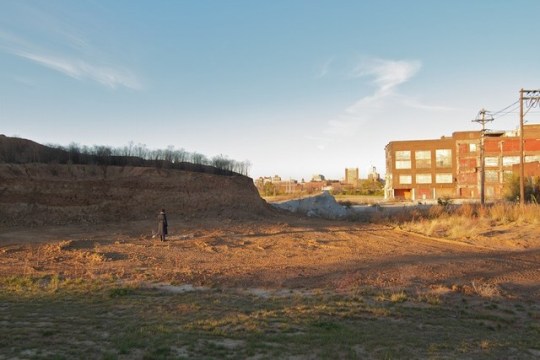#Mariam Ghani
Photo
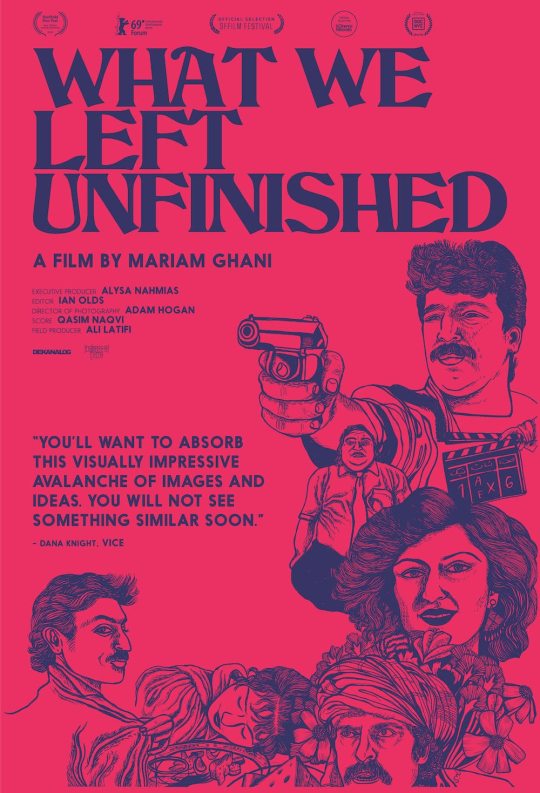
new-to-me #604 - What We Left Unfinished
15 notes
·
View notes
Text
Central to their production of an alternative archive is what [Mariam] Ghani and [Chitra] Ganesh call their “Warm Database.” Warm data, as Ghani explains, stands in opposition to the “cold hard facts” elicited by official interrogations of the detainees and that are used to produce, discipline, and contain the “terrorist.” To that end, the artists have posted on their website what they term a “Warm Data Questionnaire”; they invite all those who have been “affected by detention and/or deportation” to answer questions such as the following:
Who was the first person you ever fell in love with? What is your favorite flavor, and what is the one food that if you had the choice you would never eat? Which family member are you the closest to? Describe a place you see when you close your eyes at night. Name a piece of music that is always running through your head. What is your earliest childhood memory? Which muscle do you use the most in your normal daily activities?
The artists state that their intention is to collect material or information that would be deemed “useless” and without value in the eyes of the surveillance apparatus; this is precisely the information that is excised or never granted entrance in the first place in the official archive. If what is deemed as “religious fervor” or “anti-Americanism” are the only forms of affect that the security apparatus seeks to elicit and document as “proof” of the detainee’s terrorist status, the “warm data” gathered by Ganesh and Ghani instead constitutes an alternative “archive of feelings,” to use Ann Cvetkovich’s evocative phrase.
Archive, Affect, and the Everyday: Queer Diasporic Re-Visions by Gayatri Gopinath, in Political Emotions
3 notes
·
View notes
Video
vimeo
Creative Ethnography Identity from Matthew Shaffer on Vimeo.
Creative ethnography exploring gender, identity, and agency during my first year of graduate school at Wilson College 2021. For educational purposes only.
“Moving Pictures”
Introduction:
I spent the better part of my childhood and adolescence struggling to find a place among my peers; I was uninterested in the activities and conversations that held their attention, and turned instead to finding myself in the characters I was enamored with on screen and stage. These larger-than-life representations provided a layered, complicated, authentic development, which resonated with me deeply.
My idea to explore the Los Angeles film community was born out of a lecture in Praxis––Movement Arts exploring narrative and ritual; specifically how the interplay between ritual and performance creates a support structure that captures an audience. As we watched the work of Martha Graham’s, Appalachian Spring (1944), I was intrigue with how precise she was in introducing clear characters and conflict in her story development. For my creative ethnography, I decided to examine the commonalities which exist within a small, likeminded, but incredibly diverse group of Los Angeles film connoisseurs. My question, does our gender and socioeconomic background impact the way we perceive movies?
While reading Victor Turner’s, "The Anthropology of Performance", my interest was peaked when he suggested, “One may perhaps distinguish between secret and public liminality, between performative genres that are secluded from the gaze of the mass and those that involve their participation not only as audience but also as actors––taking place, moreover, in the squares of the city, the heart of the village, not away in the bush, hidden in a cave, or secreted in a catacomb or cellar. (1987; p. 26). Here I am in Los Angeles, CA. A city that largely hides in cars, sitting in traffic, slowly dancing down freeways that lead us to offices, appointments, and social engagements. Turner’s concept sparked a curiosity; most of the people that share my love of obscure 35mm film––the kind that play at The New Beverly Cinema–-have a colorful personality and curated style they share publicly; but we all arrive from different directions of a diversified and vast region.
During a lecture on place and narrative, multi-media artist, Mariam Ghani shares, “Narratives exist in places where there are conflicts; shifting public and private narratives mirror the things that contest truth; versions of the same stories; how does the public respond, how do families respond in private?”
These two ideas, encouraged me to begin my field work at The New Beverly Cinema.
I committed to attending two films a week, on Tuesday and Friday evenings, and discovered quickly that the group of attendees was usually a cluster of the same people.
I arrived early to watch as movie lovers from different directions would pull up, some in luxury vehicles, many in economy hybrid vehicles; most dressed in, what I would soon discover, was a “costume” of sorts. I learned that people liked dressing for the part of the movie goer. Some wore themed content that might tie into the film that we were going to watch.
The first three weeks, I watched, took notes, and eventually decided on several people who always stood out from the crowd. Once I established who I was going to study, I arrived at how I might approach the work. Because we were in a theater, and would spend the majority of our time in the dark watching a screen, I decided to use my smartphone to capture the exchanges and interactions with like mind film aficionados. From there, I thought it would be interesting to incorporate a backstory using the intricate web of freeways we have in Los Angeles, to represent the far reaching impact that the film has on people, and the lengths that they will go to feel one with that community.
References
Bogart, A. (2014). What’s the story: Essays about art, theater and storytelling. p. 139; Routledge
Turner, V. (1987). The anthropology of performance. p. 26; PAJ Publications
0 notes
Photo
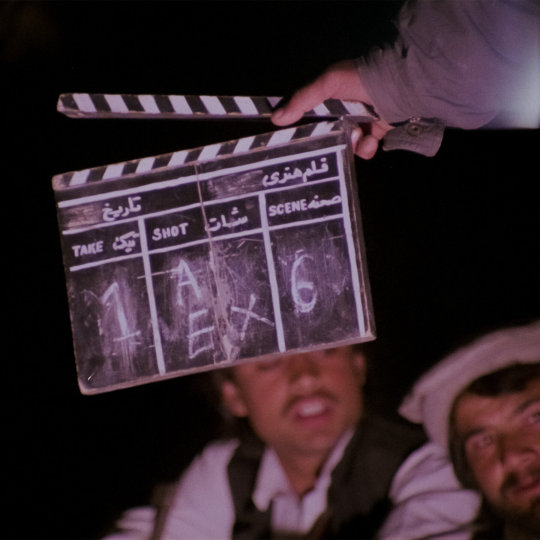
What We Left Unfinished dir. Mariam Ghani (2019)
The story of five unfinished fiction feature films from the Communist era in Afghanistan (1978-1991), and the people who went to crazy lengths to make them, in a time when films were weapons, filmmakers became targets, and the dreams of constantly shifting political regimes merged with the stories told onscreen.
#What We Left Unfinished#Mariam Ghani#2019#Afghanistan#Qatar#USA#Documentary#52 Films by women#directed by women
43 notes
·
View notes
Photo

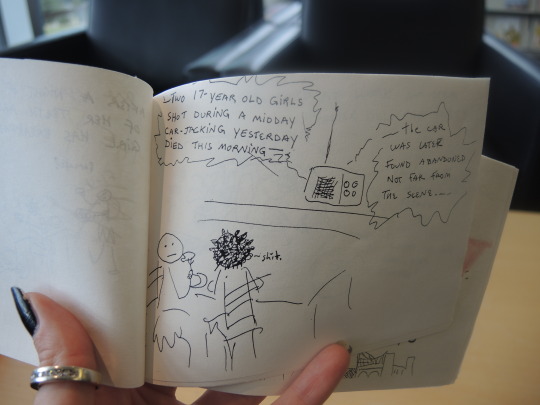

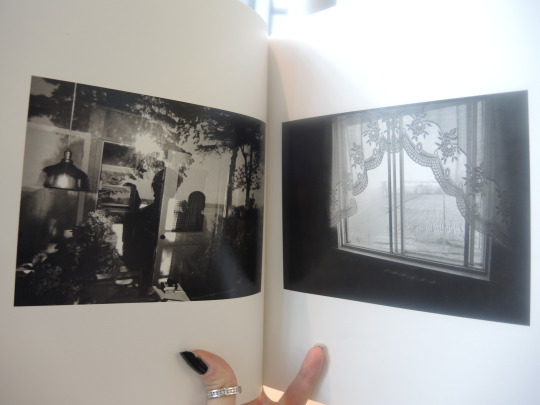

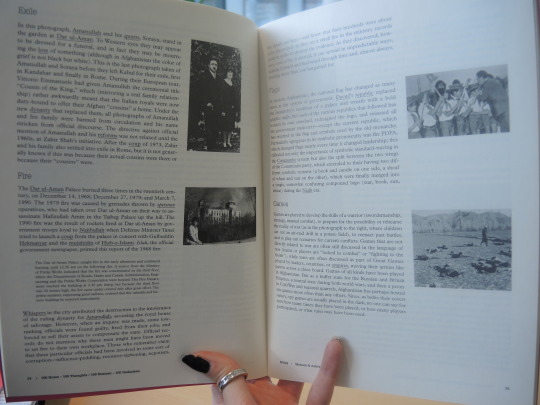



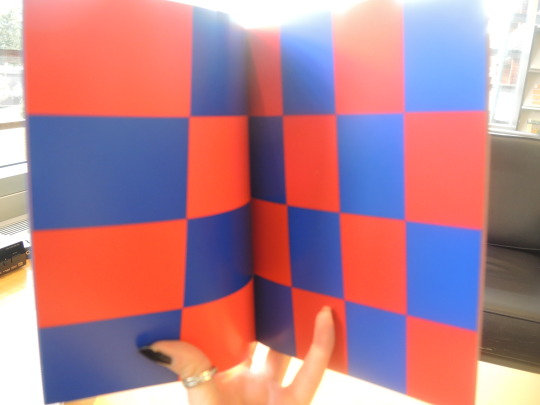
Artists’ Book Display for the week of November 4th, 2019
Are you ready for the adventures of go-go girl in Chicago Vol.2 episodes 1-5 by Claire Dolan- Chicago, IL: C. Dolan, 1994
When the Mind Hears = La pensee a L'ecoute By April Hickox- Quebec, PQ: VU Centre d' animation et de diffusion de la photographie, 1994
Afghanistan : a lexicon by Mariam Ghani- Ostfildern, Germany: Hatje Cantz, 2011
World Tour by Hirsch Farm Project- Northbrook, IL: Hirsch Foundation, 1997
Cinema by Albert Mertz- Gent Belgium: ImSchoot, 1988
#Artists' Book Display#Artists' Books#Art Books#Books and Art#Artists' Book#Library Display#Weekly Display#Library#Books#Art#Claire Dolan#April Hickox#Mariam Ghani#Hirsch Farm Project#Albert Mertz#Banff#Alberta#Banff Centre#Paul D Fleck Library and Archives#The Banff Centre#Banff Centre Library
3 notes
·
View notes
Text
Exiled Afghan president's daughter, Mariam Ghani seen strolling in New York City, sends message to Afghanistan
Exiled Afghan president’s daughter, Mariam Ghani seen strolling in New York City, sends message to Afghanistan
The daughter of exiled Afghan President Ashraf Ghani has been spotted in the United States after her father was forced to seek asylum in Dubai after the Taliban took over Afghanistan.
Mariam Ghani, 42, was photographed strolling with a friend on Thursday, August 19, after her father was granted asylum in Dubai on ‘humanitarian grounds’ after fleeing Afghanistan in a helicopter allegedly loaded…

View On WordPress
0 notes
Video
vimeo
Like Water From a Stone (excerpt)
#mariam ghani#erin ellen kelly#Vimeo#videoart#film#dance#landscape#place#norway#sea#stone#site-responsive#geniuslocus
1 note
·
View note
Text
The documentary focuses on films made during communist rule in Afghanistan, from 1978 to 1991. This was a period of constantly shifting power, of coups and counter-coups, of Soviet occupation, American meddling, and civil war. Social reforms clashed against a reactionary insurgency. Caught in the middle of all this were filmmakers trying to do their work. Which was difficult, as changing circumstances meant that what was and wasn’t allowed to be shown and said in film kept changing. It was for this reason that each of the movies spotlighted in What We Left Unfinished were abandoned, even after they had been shot.
For example, the 1978 feature The April Revolution was commissioned by Hafizullah Amin, who would seize the presidency in a coup the next year. It was not long after that he was overthrown and killed by the Soviets, whereupon The April Revolution was obviously an untouchable property. What We Left Unfinished covers not just the making of that film but also of Downfall (1987), The Black Diamond (1989), Wrong Way (1990), and Agent(1991). The documentary tells their stories, along with the wider story of Afghanistan during those years, through their footage, long abandoned but not completely forgotten.
The reels for the aborted film projects were kept in the archives of Afghan Film, the state film company. There they remained for many years. When the Taliban came to power, they destroyed much of the company’s archives, but staff were able to protect some of its contents. Ghani has been working with Afghan Film to preserve what remains in its library since 2011. What We Left Unfinished is the result of her and her collaborators’ research into the archive and their rediscovery of the five films it showcases, as well as all the others still in need of preservation.
By combining the surviving crew members’ reminisces with the restored footage, Ghani creates a fascinating quasi-historical document. The films’ versions of then-contemporary events, or their expression on societal conditions, often clashes with what the real people recall. (Memories of a brutal battle play out over imagery of a bloodless victory from one of the films, for example.) We sometimes speak of art as a mirror for culture. What We Left Unfinished interrogates what reflection we see in the mirror; especially if that mirror was for a long time discarded because its reflection was deemed unsuitable for people to see.
37 notes
·
View notes
Note
Dear Cat & Mouse: I am in dire need of help finding a fc for a character whose origins go back to the Fertile Crescent. She's female, mid-30s to mid-40s. If you could please help me find someone I'd be so so thankful!
Shannon Elizabeth (1973) Syrian, Lebanese / English, Irish, German.
Dina Azar (1973) Lebanese.
Hilda Khalife (1973) Lebanese Maronite.
Traci Dinwiddie (1973) Syrian / Cherokee.
Joumana Mourad (1973) Syrian.
Viviane Ndour (1973) Lebanese / Mauritanian, Malian.
Suzan Najm Aldeen (1973) Syrian.
Dania Khatib (1973) Lebanese.
Sabine Nahas (1973) Lebanese.
Senta Moses (1973) Lebanese / Italian.
Razan Moughrabi (1973) Lebanese.
Bassima / Paula Al Turk (1973) Lebanese.
Jillian Michaels (1974) ½ Syrian, Lebanese, ¼ Italian, 1/8 Russian Jewish, 1/8 Austrian Jewish.
Maysoon Zayid (1974) Palestinian.
Suheir Hammad (1974) Palestinian.
Aline Khalaf (1974) Lebanese.
Alissar Caracalla (1974) Lebanese.
Clauda Chemaly (1974) Lebanese.
Nicole Saba (1974) Lebanese / Armenian.
Isabel Bayrakdarian (1974) Lebanese, Armenian.
Ana María Orozco (1973) Colombian [Lebanese, Possibly Other].
Annie Parisse (1975) ½ Italian, ¼ Syrian, ¼ Slovak.
Dima Orsho (1975) Syrian.
Coraima Torres (1973) Venezuelan [Lebanese, Possibly Other].
Saba Mubarak (1976) Palestinian / Jordanian.
Rasha Rizk (1976) Syrian.
Soulafa Maamar (1976) Syrian.
Rania Kurdi (1976) Jordanian Arab, Syrian Kurdish, British.
Cherien Dabis (1976) Palestinian / Unknown, possibly Jordanian.
Najwa Nimri (1976) Jordanian / Navarrese.
Dima Al Jundi (1976) Syrian.
Saba Mubarak (1976) Jordanian / Palestinian.
Marwan Naji (1976) Lebanese.
Mireille Safa (1976) Lebanese.
Laura Khalil (1976) Lebanese.
Maya Nasry (1976) Lebanese.
Ana Roces (1976) Lebanese, Filipino.
Katia Kaady (1976) Lebanese.
Maya Nasri (1976) Lebanese.
Yasmine Hamdan (1976) Lebanese.
Diana Haddad (1976) Lebanese Arab / Lebanese Maronite.
Charla Baklayan Faddoul (1976) Syrian, Armenian.
Sulaf Fawakherji (1977) Syrian.
Raya Abirached (1977) Lebanese.
Cyrine Abdelnour (1977) Lebanese, Greek.
Amal Hijazi (1977) Lebanese.
Elissa / Elissar Zakaria Khoury (1977) Lebanese / Syrian.
Tania Khalill (1977) Brazilian [Syrian, Spanish].
Lilia al-Atrash (1977) Syrian.
Paula Sharim (1977) Chilean [Lebanese Jewish, Egyptian Jewish, possibly other].
Joelle Mardinian (1977) ¼ Lebanese, ¼ Syrian, ¼ Armenian, ¼ Italian.
Rima Maktabi (1977) Lebanese.
Bárbara Mori (1978) Uruguayan [Lebanese, Japanese, Basque, Spanish], some Mexican.
Zain Awad (1978) Jordanian.
Mariam Ghani (1978) Lebanese / Pashtun Afghan.
Amal Clooney (1978) Lebanese Druze.
Rola Saad (1978) Lebanese.
Eman Fustok (1978) Syrian, unspecified other.
Yasmine Al Massri (1978) Palestinian / Egyptian.
Natalie Saleeba (1978) Lebanese.
Clarice Assad (1978) Brazilian [¼ Lebanese, ¾ Unspecified Other].
Klára Issová (1979) Syrian / Czech.
Maguy Bou Ghosn (1979) Lebanese.
Maysoon Shaladi (1979) Syrian.
Nelly Makdessy (1979) Lebanese.
Re-Mi Bendali (1979) Lebanese.
Dana Hamdan (1979) Lebanese, Palestinian, Jordanian.
Rindala Kodeih (1979) Lebanese / Unspecified.
Hala Shiha (1979) Lebanese / Egyptian.
Dima Kandalaft (1979) Syrian.
Darine Hamze (1979) Lebanese.
Carole Ammoun (1979) Lebanese.
Nadine Al Rassi (1979) Lebanese.
Nadine Saab (1979) Lebanese.
Nadina Zarifeh (1979) Lebanese.
Tulip Joshi (1979) Lebanese / Gujarati Indian.
Joelle Behlok (1979) Lebanese.
Clemence Achkar (1979) Lebanese.
Verónica Orozco (1979) Colombian [Lebanese, Possibly Other].
Lena Chamamyan (1980) Syrian, Armenian.
Nadja Haddad (1980) Brazilian [Lebanese].
Nadine Salameh (1980) Palestinian.
Yasmine Hanani (1980) Iraqi.
Jenny Esber (1980) Syrian / Ukrainian.
Jaclyn Stapp (1980) Jordanian.
Jenna Dewan (1980) Lebanese, Polish / German, English.
Ayah Marar (1980) Jordanian / Czech, Bulgarian.
Naty Botero (1980) Colombian [Lebanese, Possibly Other].
Viviane Mrad (1980) Lebanese.
Cynthya Karam (1980) Lebanese.
Cristina Abuhazi (1980) Venezuelan [Lebanese].
Lamitta Frangieh (1980) Lebanese.
Abeer Nehme (1980) Lebanese.
Dominique Hourani (1980) Lebanese.
Christina Sawaya (1980) Lebanese.
Maya Diab (1980) Lebanese.
Katia Khatchadourian (1980) Lebanese.
Viola Haqi (1981) Iraqi, Dutch.
Shiri Maimon (1981) Tunisian Jewish, Syrian Jewish, Moroccan Jewish, Algerian Jewish, Greek Jewish.
Majida Issa (1981) Colombian [Lebanese, Italian].
Darine Chahine (1981) Lebanese.
Aline Lahoud (1981) Lebanese.
Darine Hadchiti (1981) Lebanese.
Shatha Hassoun (1981) Iraqi / Moroccan.
Elsa Zgheib (1981) Lebanese.
Bethany Kehdy (1981) Lebanese / Unspecified.
Carla Haddad (1981) Lebanese.
Sabrina Sato (1981) Brazilian [Japanese / Lebanese, Swiss].
Valerie Domínguez (1981) Colombian [Lebanese / Unspecified].
Myriam Atallah (1981) Syrian.
Waad Al Bahri (1981) Syrian.
Martha Issová (1981) Syrian / Czech.
Mais Hamdan (1982) Palestinian, Jordanian, Lebanese.
Nadia Jebril (1982) Palestinian.
Tamara Jaber (1982) Lebanese / Unspecified.
Rouwaida Attieh (1982) Syrian, Lebanese.
Nadia Buari (1982) Lebanese / Ghanaian.
Haya Awad (1982) Jordanian.
Samia Longchambon (1982) Lebanese, French / English.
Layal Abboud (1982) Lebanese.
Dina Hayek (1982) Lebanese / Syrian.
Marcelle Bittar (1982) Brazilian [Lebanese, Portuguese].
Adriana Tarud (1982) Colombian [Lebanese / Unspecified].
Sandra Rizk (1982) Lebanese.
Kinda Alloush (1982) Syrian.
Nesreen Tafesh (1982) Palestinian, Algerian.
Melissa / Myriam Shehab (1982) Lebanese [Iraqi].
Mai Selim (1983) Palestinian, Jordanian, Lebanese.
Meytal Cohen (1983) Iraqi Jewish.
Tammin Sursok (1983) Lebanese, Unspecified Other.
Nancy Nasrallah (1983) Lebanese.
Yara / Carla Nazih al-Berkashi (1983) Lebanese.
Lolita Chammah (1983) Lebanese, Italian / Hungarian Jewish, Slovakian Jewish, German Jewish, Austrian Jewish, French Jewish, French.
Audrey Assad (1983) Syrian / Unspecified Other.
Vinessa Antoine (1983) Trinidadian [African, Syrian].
Nadia Manfoukh (1983) Syrian.
Dena Takruri (1983) Palestinian.
Nancy Ajram (1983) Palestinian Arab / Lebanese.
Diana Karazon (1983) Jordanian [Palestinian, Syrian].
Maha Yakoub (1983) Palestinian, Italian.
Domino Kirke (1983) Iraqi Jewish, Ashkenazi Jewish / English, Scottish.
Susie Youssef (1984) Lebanese.
Kinda Hassan (1984) Lebanese.
Darine (1984) Lebanese / Romanian.
Valeska Saab (1984) Ecuadorian [Lebanese, Spanish].
Nadine Nassib Njeim (1984) Lebanese / Tunisian.
Lara Maria Kay (1984) Lebanese.
Daniella Sarahyba (1984) Brazilian [Lebanese / Spanish (including Galician), Portuguese, possibly other].
Fozi Mozi (1984) Palestinian.
Amelia Vega (1984) Dominican [Lebanese, Cuban, Spanish, English].
Rola Yammout (1984) Lebanese / Egyptian.
Nourhanne (1984) Lebanese, Armenian.
Kinda Hanna (1984) Syrian.
Nancy Afyouny (1984) Lebanese.
Mashael (1984) Lebanese.
Sulaf Jalil (1984) Iraqi.
All from @tasksweekly masterlists! -C
10 notes
·
View notes
Link
0 notes
Text
Filmmaker Mariam Ghani to Screen Rare Afghan Films at EMPAC
Filmmaker Mariam Ghani to Screen Rare Afghan Films at EMPAC
Troy, NY — On Monday, April 24, at 7PM, artist Mariam Ghani will present a selection of rare films produced between 1978-1991 from the Afghan Film Archive at the Curtis R. Priem Experimental Media and Performing Arts Center (EMPAC) at Rensselaer Polytechnic Institute. What We Left Unfinished is Ghani’s long-term research and film project. Working in the dual role of artist and…
View On WordPress
#Afghan Film Archive#Curtis R. Priem Experimental Media and Performing Arts Center#Curtis R. Priem Experimental Media and Performing Arts Center at Rensselaer Polytechnic Institute#EMPAC#EMPAC at RPI#Mariam Ghani#Rensselaer Polytechnic Institute#RPI#Troy NY#Victoria Brooks#What We Left Unfinished
0 notes
Link
Mariam Ghani (born in 1978; Age: 43 years) is a well known filmmaker, Web character, visible artist, social activist, social media star, entrepreneur, and photographer from the USA. She is famously often called the daughter of Ashraf Ghani, who's a former President of Afghanistan. As per the official studies, he fled the nation on 15 August 2021 (Sunday) as a result of Talbinas entered Kabul to seize it. He left Kabul with round USD 169 million. Other than this, Mariam is working as a visible artist and filmmaker for a number of years. She has made many documentaries and movies resembling What We Left Unfinished, Fugitive Refrains, Factors of Proof, and lots of extra. Mariam Ghani’s Biography / Wikipedia (Schooling & Birthday) Mariam Ghani Wiki:- Ghani took beginning in 1978 in Brooklyn, New York Metropolis, United States. Let me let you know that she is 43 years outdated as of 2021. Based on the sources, she was raised in exile and couldn’t journey to Afghanisthan till the age of 24 years outdated. The outdated picture of Mariam Ghani Mariam took admission to an area college in America for her major training. Later, she enrolled herself in New York College to review comparative literature. Furthermore, she additionally attended the College of Visible Arts and studied videography, media, and pictures. Every thing About Ashraf Ghani’s Daughter, Mariam Ghani Wiki Full Actual Title Mariam Ghani. Date of Delivery 1978. Age (as of 2021) 43 years outdated. Place of Delivery Brooklyn, New York Metropolis, United States. Career Visible Artist, Filmmaker, Director, and social media star. Nationality American. Faith Islam. Ethnicity Combined. Internet price USD 13-15 Million (approx.). Schooling Graduate. College The College of Visible Arts. Alma mater New York College. Official Web site www.mariamghani.com Weight (approx.) In Kilograms: 55-59 kg.In Kilos: 121-130 lbs. Top (approx.) In Ft Inches: 5′ 6″.In Meters: 1.67 m.In Centimetres: 167 cm. Hair Colour Black. Hair Size Medium. Eye Colour Black. Mariam Ghani’s Household & Ethnicity Mariam Ghani Biography:- She was born to Mohammad Ashraf Ghani (father) and Rula Ghani (mom). Her mom, Rula Ghani is Afghanistan’s former first woman. As per Time journal, she is likely one of the high 100 most influential individuals. Mariam has a youthful brother named Tarek Ghani. Tarek is a well known professor in the USA. Mariam follows the Islam faith and belongs to the combined ethnical race. Dad and mom Father: Mohammad Ashraf Ghani.Mom: Rula Ghani. Brother Tarek Ghani. Who's Mohammad Ashraf Ghani? Ashraf Ghani is a well-recognized politician and former 14th President of Afghanistan. He served the place from 29 September 2014 to fifteen August 2021. Furthermore, he's additionally the co-founder of the Institute for State Effectiveness. As everybody is aware of that Taliban entered Afghanisthan in August 2021 and carried out their terror actions. They killed many harmless males, ladies, and youngsters. Furthermore, Talibans additionally raped younger ladies. On 15 August 2021, the Taliban attacked Kabul and tried to seize it. The identical day Ashraf Ghani fled the nation. Breaking News: President Ashraf Ghani, who fled Afghanistan final weekend because the Taliban surrounded Kabul, is now within the UAE, the Gulf nation stated after days of hypothesis about his whereabouts.https://t.co/XFESUFDjlj — The New York Occasions (@nytimes) August 18, 2021 The residents of Afghanistan are so indignant and upset with Ashraf Ghani as a result of he didn't fulfill his duties and left the nation in onerous occasions. On 18 August 2021 (Wednesday), Ashraf Ghani launched a press release and clarified that if he had lived in Afghanistan, the Taliban would have killed him. Additionally Learn: Who's Rick Harrison’s third wife Deanna Burditt? Ashraf Ghani’s Husband, Boyfriend & Wedding ceremony Particulars Mariam Ghani is a bit reserved about her private life. She has not disclosed whether or not she is married or not. Even after looking quite a bit on the Web, we're unable to seek out something associated to her husband. It could possibly be potential that she doesn’t wish to publish private pictures on any social media account. Mariam’s Profession Based on her IMDB profile, Ghani is working as a author, filmmaker, visible artist, and lecturer for greater than a decade. As per the studies, she has additionally written a e book named ‘Afghanistan: A Lexicon’. It's favored by lots of people as she wrote in regards to the residents and tradition of Afghanistan. She stated:- A listing of issues misplaced in Afghanistan over the previous century, styled as an encyclopedia entry, accompanied by an engraving of a starkly silhouetted window opening in a ruined constructing.” As a Visible Artist and Filmmaker Based on her official web site, her work primarily consists of moments, locations, and areas that passed off over lengthy durations of time and collaborations. Many of the movies are screened at Sheffield Doc/Fest, Il Cinema Ritrovato movie festivals, Rotterdam, and different platforms. Other than this, her work may also be seen on the Indianapolis Museum of Artwork, Liverpool Biennials, Saint Louis Artwork Museum, Dhaka Artwork Summit, and lots of extra. Let me let you know that Ghani can be a professor at Bennington Faculty. Trending Now – Tahzjuan Hawkins (Bachelor) Wiki – Biography, Household & Information As a Director and Producer Mariam stepped into the movie business in 2005. She firstly produces and directs a brief documentary movie named Factors of Proof. Later in 2007, she acquired an opportunity to direct and produce a brief video named ‘Fugitive Refrains’. Based on the sources, her documentary movie ‘What We Left Unfinished’ is the primary feature-length movie of Mariam. It was additionally premiered at Berlinale and the USA theatres in 2019 and 2021 respectively. Furthermore, she is at the moment engaged on her upcoming challenge named ‘Dis-Ease’. Mariam Ghani Internet price / Earnings / Career / Salary Ghani is getting a very good sum of money from her a number of jobs. She could be incomes round USD 30-40k (approx.) from her directing and filmmaking profession. Furthermore, she additionally will get paid for visible arts and as a lecturer. Properly, she resides in a fancy house in Brooklyn’s Clinton Hill neighborhood, New York. She additionally has floor-to-ceiling cabinets, that are coated with books. Furthermore, she additionally has embroidered pillows and a Turkmenistan rug. Her kitchen and dwelling space is embellished with lovely and costly stuff. Based on a guess, Mariam Ghani’s web price is estimated at USD 13-15 million roughly. 10 Information You Ought to Know About Mariam Ghani Mariam appeared at many dwell exhibits at varied information channels and shared her opinions. In 2012, she was nominated for the New Imaginative and prescient Award for A Temporary Historical past of Collapses. In 2019, her title was enlisted in Grand Jury Prize and New Expertise Award. Ashraf Ghani’s daughter was featured within the TV sequence named ‘Kulturzeit’ in 2012. On 17 August 2021, she uploaded a long-lengthy paragraph on her IG profile and in addition shared her grief for the folks in Afghanistan. She doesn’t add her pictures on any social media handles. The well-known visible artist tried to enter into Afghanistan politics however later modified her resolution. Being a social activist, she additionally helps females and their rights. Mariam Ghani additionally speaks in regards to the systemic inequality within the financial, political, and social programs. She has 2.1k followers on her Instagram account until August 2021. Mariam Ghani Wikipedia / Instagram / Twitter / Fb Profile Instagram: @mostlywindows Twitter: @ghanimariam Fb: @MaryamGhaniOfficial FAQ of Mariam Ghani Q. 1 Who's Mariam Ghani? Ans. Mariam is an American visible artist, filmmaker, and daughter of Afghanistan’s former President Ashraf Ghani. Q. 2 The place does Mariam Ghani dwell? Ans. Brooklyn, New York, United States. Q. 3 What's the age of Mariam Ghani? Ans. 43 years outdated (as of 2021). Q. 4 Who're Mariam Ghani’s dad and mom? Ans. Ghani’s father is Mohammad Ashraf Ghani (Afghanistan’s 14th President) and Rula Ghani. Q. 5 When did Mariam Ghani born? Ans. 1978. Q. 6 How wealthy is Mariam Ghani? Ans. Ghani’s web price is USD 13-15 million roughly. Q. 7 What's the occupation of Mariam Ghani? Ans. She is a visible artist, director, producer, filmmaker, entrepreneur, and author. Photographs Sources: Fb and Google. The publish Who's Mariam Ghani? Wiki, Biography, Husband, Age, Household, Internet price, Profession & Extra appeared first on -.
0 notes
Text
REVOLUTIONS & MOVEMENTS
An AFI Exhibition at Dupont Underground
September 4 - 9, 2018
Dupont Underground
19 Dupont Circle NW
Washington, D.C. 20036
From the protest anthems of Emel Mathlouthi that galvanized millions during the Tunisian Revolution to the subversive concept pop art of Ganzeer, this exhibition is a rallying cry, loudly proclaiming the power of art to create positive change around the world. Offering vital perspectives on issues like freedom of expression, human and women’s rights, immigration, the refugee crisis, LGBTQI rights, and social and environmental justice, these artists work across a range of disciplines to show us what resistance and revolutions look like through the creative lens.
Featuring visual art by: Fadi Asmar, Negar Behbahani, Ram Devineni, Chitra Ganesh, Mariam Ghani, Ganzeer, Roya Farassat, Seán Hannan, Ash Koosha, Kairon Liu, and Aida Sulova.
FULL CATALOGUE
FACEBOOK EVENT
1 note
·
View note
Photo

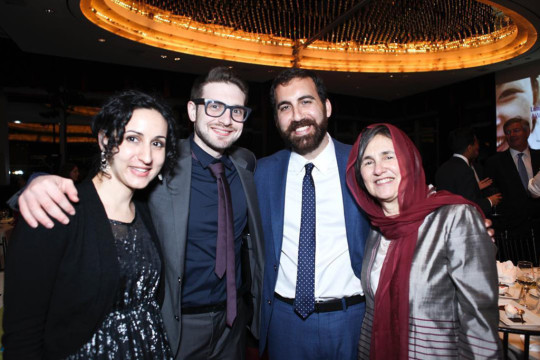


Days after Afghan president Ashraf Ghani fled Kabul, his artist daughter Mariam Ghani urged her 3,000-plus InstagramDays
#FawadAndarabi#Ghani#SubStack#13KilledInKabulNames#PresidentGhani#ChrisStigallTwitter#AtlantaFalcons2021Schedule#AfghanPresidents
0 notes
Text
Watch "Mariam Ghani Daughter of Ashraf Ghani Enjoying Luxurious Life in US" on YouTube
youtube
0 notes
